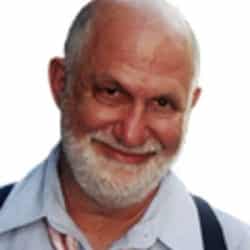
Posted on August 7th, 2017 - Last updated: October 22nd, 2018
This content was written in accordance with our Editorial Guidelines.

Dr. Stanton Peele, recognized as one of the world's leading addiction experts, developed the Life Process Program after decades of research, writing, and treatment about and for people with addictions. Dr. Peele is the author of 14 books. His work has been published in leading professional journals and popular publications around the globe.

News item: The Commission on Combating Drug Addiction and the Opioid Crisis, headed by New Jersey Governor Chris Christie, was released. It declares, in the most lurid terms, that we are undergoing an opioid addiction crisis which should be declared a national emergency.
Fact check: The government’s most thoroughgoing analysis of prescription medicine addiction finds almost negligible painkiller addiction, less than one percent, perhaps substantially less than one percent:
(these data were from the most recent data set, the 2015 National Survey on Drug Use and Health)
Further facts:
1. Painkiller use. About 97.5 million Americans used a painkiller over the past year—36% of Americans.
My, that is a lot of painkiller use. How many people became addicted?
2. Painkiller addiction, dependence, and substance use disorder. “Pain reliever use disorder” includes what are termed both “abuse” and “dependence” in DSM-IV (the criteria used for assessment), so that many of those with a painkiller SUD may fit only the “abuse,” and not the “dependence,” diagnosis. Fewer than one percent of Americans had a painkiller use disorder, and some proportion of these were not dependent.
3. Painkiller misuse. Much is being made of a separate category, called “misuse” of prescription drugs: “12.5 million people misused pain relievers in the past year” (not quite five percent). Less than five percent (4.7 percent) is a bit scary, perhaps, but what is misuse?
Misuse is “use in any way that is not directed by a doctor: use without a prescription of the respondent’s own, use in greater amounts than a drug was prescribed,
use more often than a drug was prescribed, use for longer than told to take a drug.”
That’s a pretty wide swath of people, including “street” painkiller users, who have no prescription for the drug. It also includes anyone who has an old prescription, experiences pain, and uses a couple of their old pain pills.
But what is most remarkable is that, even including this group of nonprescribed painkiller users in the population, so few Americans fit the SUD and dependence (addiction) categories.
And why the hell were these people misusing painkillers? “The most commonly reported reason for their last misuse was to relieve physical pain” (63 percent). Damn them!
Consequences:
There is an alarming rise in drug deaths involving painkillers. As I have described in PT, this is due to unsafe drug use involving drug (and alcohol) combinations, and not stemming from opioid addiction. Since we misunderstand the nature of the problem, the steps the Christie commission recommends are wrongheaded and will only exacerbate the situation.
Christie et al. want primarily to limited prescriptions further. But that will increase the population of off-prescription and non-prescription users, among whom negative consequences are more likely.
And the Christie Commission wants, of course, more addiction treatment. Treatment for what? Misuse is not a clinical syndrome.
The solutions dictated by the data are more medical supervision of use by nonpunitive medical providers, and education to proper use (primarily no drug/alcohol mixing).
The appropriate solutions are never going to happen—at least following the Christie Commission report recommendations.
Caveat:
The report does recommended passage of Good Samaritan laws, meaning that people won’t be legally liable for reporting a medical drug crisis they witness or participate in. In other words, they won’t leave a fellow drug user to die. That is sound, humane, and life saving.